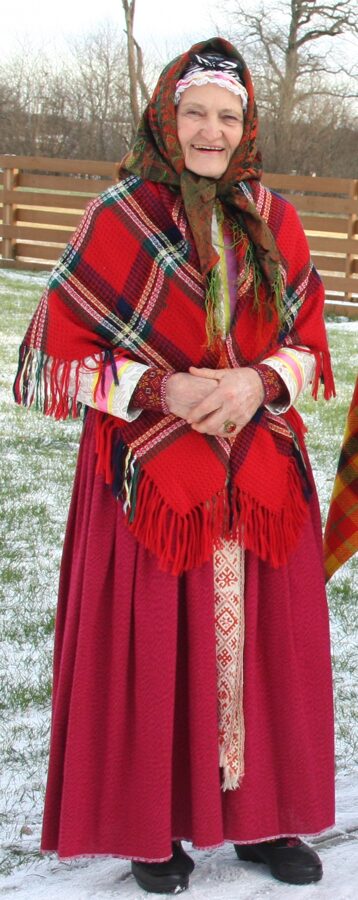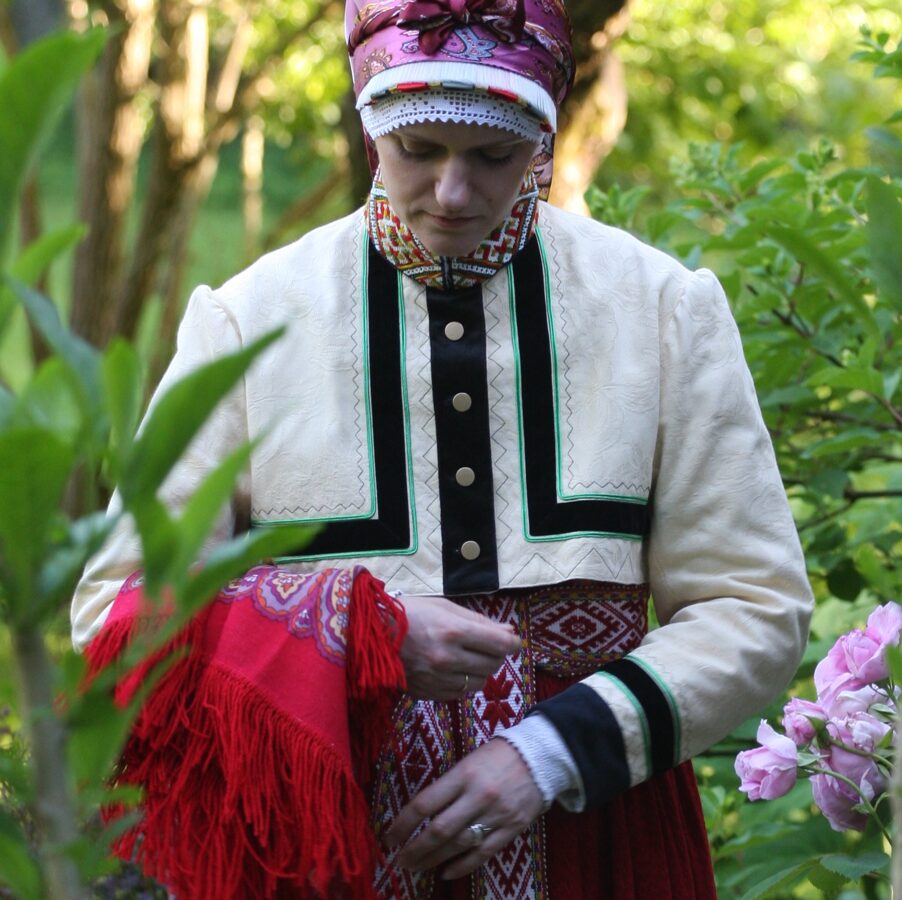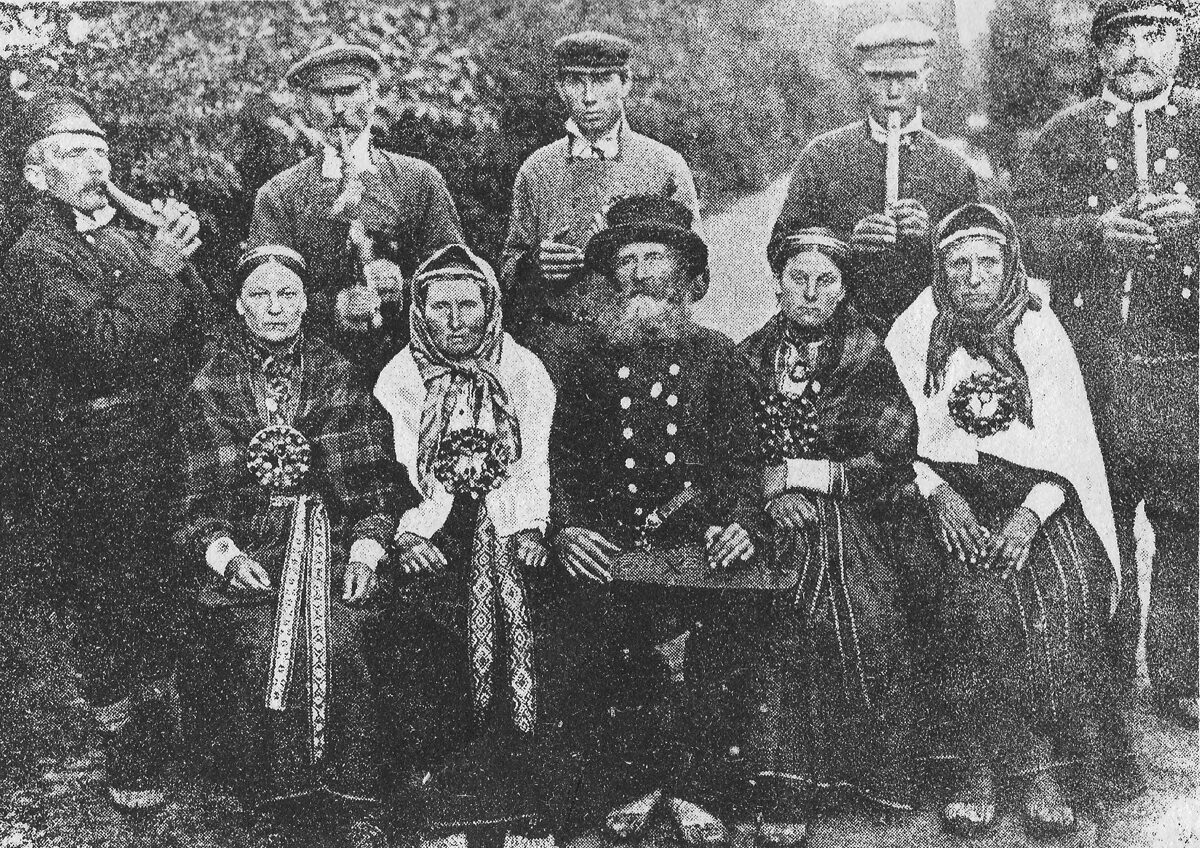Alsunga Ethnographic Costume: Cotton Jackets
When discussing the Alsunga ethnographic costume, it may be more accurate to refer to it as the Suiti ethnographic costume. Identical garments were worn in all estates belonging to the Schwerin family — Alsunga, Jūrkalne, Gudenieki, and Basi —which were collectively given the name "Suiti." However, since Alsunga was the administrative center of the region, I will use the term Alsunga ethnographic costume.
The Alsunga folk costume was worn relatively late into the 1950s. As a result, it evolved beyond the use of homespun wool and linen fabrics to include industrially produced and imported cotton fabrics. This is evidenced by the presence of short jackets within the Alsunga ethnographic costume.
Characteristics of Alsunga Jackets
The length of the Alsunga jackets extends slightly past the chest but does not go below the waist. These jackets are characterized by a round, close-fitting neckline, buttoned front closure, and long sleeves. The lower edge of the jacket often features an extended back section.

Cotton Jacket from the Early 20th Century
The front, lower hem, and sleeve ends of the jackets are often decorated with zigzag and curved stitching (although this is not always present), as well as sewn fabric ribbons and soutache cords.
There are several variants of these jackets:
Homespun red half-woolen jackets
Industrially produced cotton jackets
The cotton jackets can be categorized into two types:
1. Floral Jackets
Floral jackets were made from patterned cotton fabric and lined with linen or cotton fabric.
These jackets were often additionally decorated with fabric triangles of various colors sewn into the seams of the front panels, lower hem, and sleeve ends. These triangles were called "wolf’s teeth."
Some jackets featured a ribbon tassel attached to the neckline. Floral jackets were worn in summer as work or home attire.
Under the floral jacket, women wore a long sleeveless shirt. A belt was not worn with home attire, and the embroidered sleeve cuffs and pleated collars of dress shirts were not used. Likewise, decorative wrist cuffs were not worn with everyday clothing.

A historical photograph taken at the "Kunduri" house shows elderly women of the family Miklaviči (second and fourth from the left in the second row) dressed in Suiti folk costumes—floral and solid-colored jackets.
On the head, only a scarf was tied—without a wreath, cap, bonnet, or horned headscarf. Over work clothes, a mantle with a brooch was not worn, but various shawls could be used. Today, these dressing traditions are no longer strictly followed.

A photograph of grain threshing at "Kunduri" shows a woman (first from the right) wearing a floral Suiti jacket.
Shawls in the Alsunga folk costume are not fastened with a brooch; instead, their corners are left hanging freely or tied at the back (for larger shawls)—a tradition that has been preserved to this day.

2. Solid-Colored Jackets
Solid-colored jackets were made from single-color cotton fabric and lined with linen or cotton fabric. These jackets were worn both as work/home attire and as dress attire.
For festive occasions, jackets were made from high-quality fabric with jacquard patterns or satin weave. Additional decorations included contrasting fabric details in the center front and sleeve ends. Ribbons of the same material were sewn along the center front, lower hem, and sleeves.

If a solid-colored jacket was used for everyday wear, the clothing combination remained the same as with floral cotton jackets. However, when worn for festive occasions, it was paired with an embroidered shirt with decorated cuffs and a pleated collar. A mantle was worn over it, fastened with a brooch. A woven belt was tied around the lindraki (skirt), but the slengene (apron) was not worn with this jacket.

A historical photograph from the 1920s features Suiti singers and musicians. Women in the front row (second and fourth from the left) are wearing light-colored jackets with ribbon decorations beneath their mantles. One woman (fourth from the left) also shows a shirt cuff and embroidered standing collar (published in "Bandava," October 1996).
Since solid-colored cotton jackets represent the latest development stage of the Alsunga ethnographic costume, they were worn with either a wreath (for unmarried girls) or a bonnet (for married women). The inner cap and horned headscarf were no longer worn with this attire, as seen in the photograph. Over the wreath or bonnet, a scarf was tied under the chin. A wreath could also be worn without a scarf, but a bonnet was never worn alone. A brooch could also be pinned to the jacket (see the aforementioned photograph).
Cart
Cart is empty.
